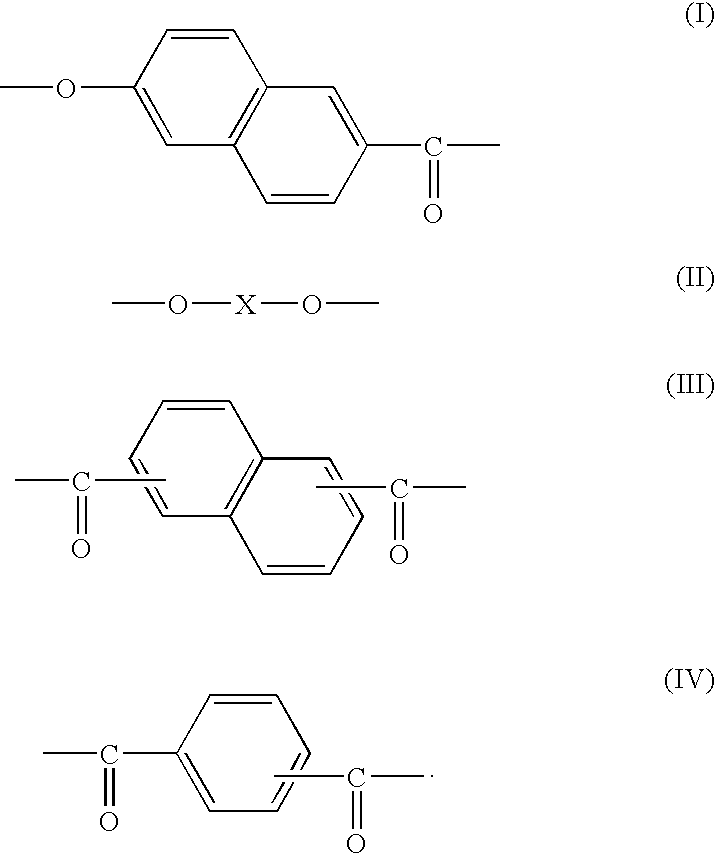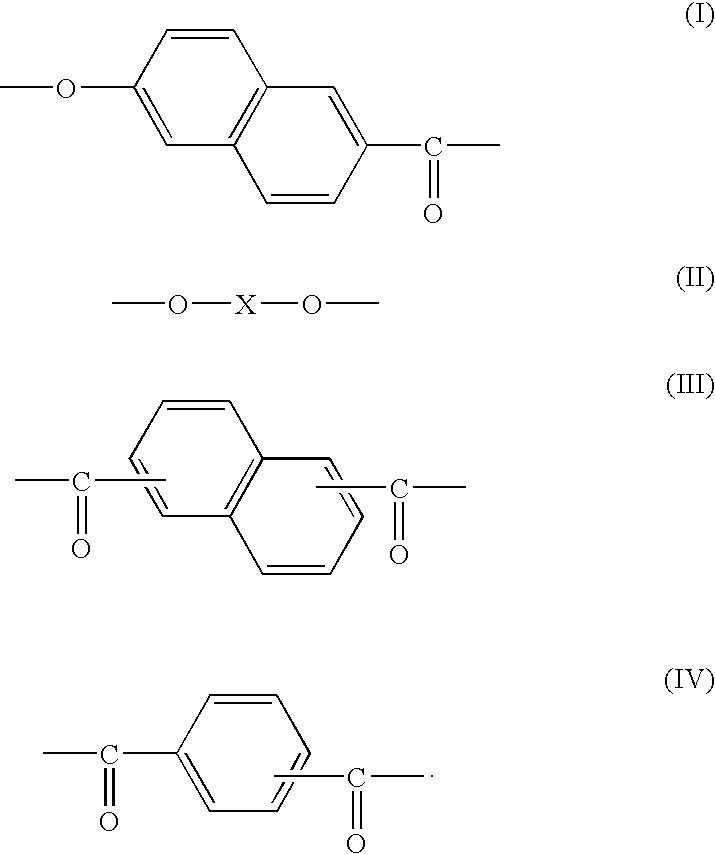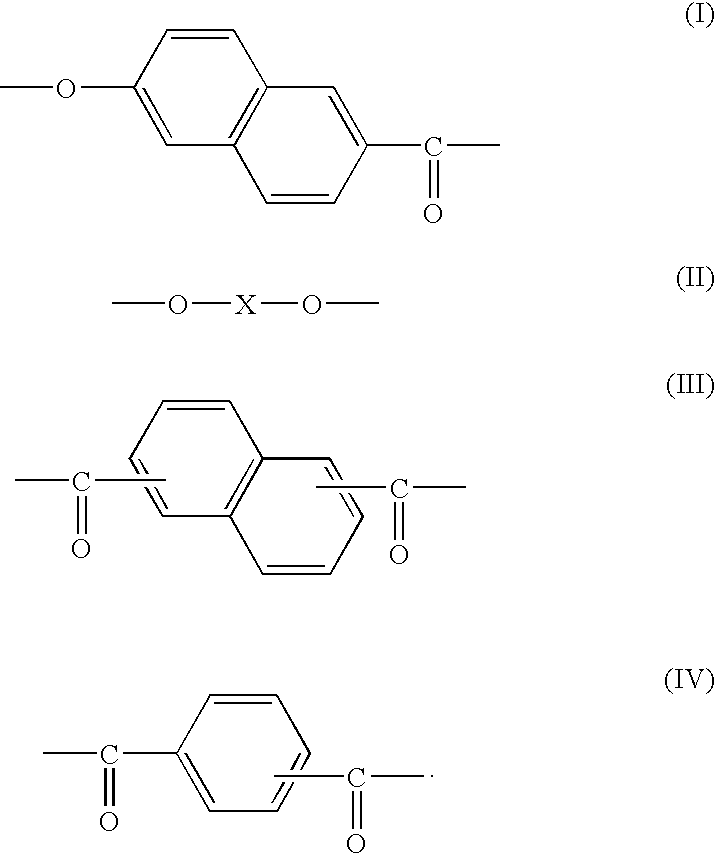Highly thermal-conductive resin composition
a technology of thermal conductivity and resin composition, which is applied in the direction of conductors, non-metal conductors, conductors, etc., can solve the problems of low thermal conductivity of materials, insufficient conductivity of modified plastics, etc., and achieve high thermal conductivity
- Summary
- Abstract
- Description
- Claims
- Application Information
AI Technical Summary
Benefits of technology
Problems solved by technology
Method used
Image
Examples
synthesis example 1
[0038] 752.72 g (4 mol) of 2-hydroxy-6-naphthoic acid, 372.42 g (2 mol) of 4,4′-dihydroxybiphenyl, 432.38 g (2 mol) of 2,6-naphthalenedicarboxylic acid, 986.19 g (9.2 mol) of acetic anhydride and 0.159 g of 1-methylimidazole as a catalyst were introduced to a reaction vessel (with a stirring apparatus, a torquemeter, a nitrogen gas introduction pipe, a thermometer and a reflux condenser). The resulting mixture was stirred at room temperature for 15 minutes, and then was heated while stirring. After the inside temperature reached 145° C., the stirring was continued for 1 hour, while maintaining the temperature. Then, 0.798 g of 1-methylimidazole as a catalyst was further added to the mixture.
[0039] The mixture was further heated from 145° C. to 310° C. over 3 hours, while distilling off the by-produced acetic acid and the unreacted acetic anhydride. Thereafter, 0.798 g of 1-methylimidazole was further added thereto, and the same temperature was maintained for 2 hours to obtain an ar...
example 1
[0041] An aluminum oxide powder (globular alumina AO-502, manufactured by TATSUMORI LTD.; thermal conductivity of 36 W / mK was mixed with the powder (aromatic polyester) obtained in Synthesis Example 1 so that the amount of the aluminum oxide was 70% by weight with respect to the total amount of the aluminum oxide and the polyester. The mixture was granulated at a cylinder temperature of 360° C. with a twin-screw extruder (PCM-30, manufactured by IKEGAI LTD.) to obtain a resin composition.
[0042] The resin composition was dried at a temperature of 120° C. for 3 hours, and was molded into a bar-shaped test piece (with a size of 64 mm×13 mm×3 mm) at a cylinder temperature of 370° C. and a mold temperature of 130° C. with an injection molding machine (PS40E5ASE type, manufactured by NISSEI PLASTIC INDUSTRIAL CO., LTD.). A thermal conductivity of the test piece was measured by a heat ray process in accordance with JIS R2618. The thermal conductivity was 2.8 W / mK.
PUM
| Property | Measurement | Unit |
|---|---|---|
| Temperature | aaaaa | aaaaa |
| Thermal conductivity | aaaaa | aaaaa |
Abstract
Description
Claims
Application Information
 Login to View More
Login to View More - R&D
- Intellectual Property
- Life Sciences
- Materials
- Tech Scout
- Unparalleled Data Quality
- Higher Quality Content
- 60% Fewer Hallucinations
Browse by: Latest US Patents, China's latest patents, Technical Efficacy Thesaurus, Application Domain, Technology Topic, Popular Technical Reports.
© 2025 PatSnap. All rights reserved.Legal|Privacy policy|Modern Slavery Act Transparency Statement|Sitemap|About US| Contact US: help@patsnap.com



